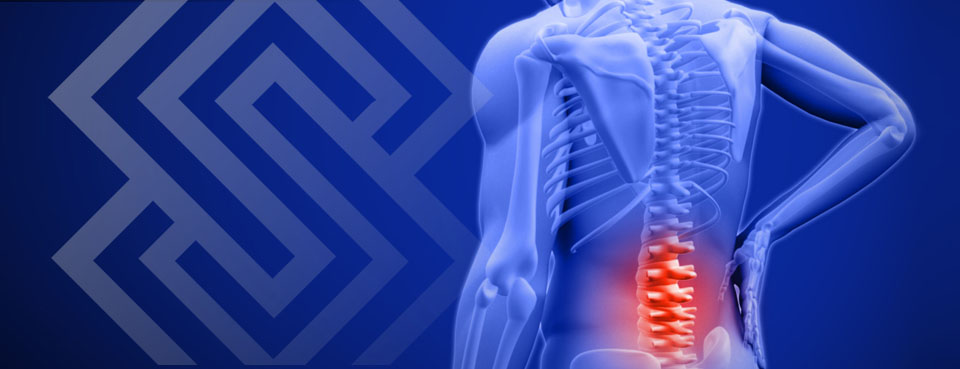Bulging Disc
Bulging discs most commonly occur in the lower back. They occur when a deteriorated disc swells through an opening in the spine, extending outside of its normal area. This condition can occur when a disc moves out of position. This can occur slowly over a long period. As the disc moves the soft nucleus balloons toward a weak or damaged point in the annulus fibrosus, the hard protective case surrounding it.While there is usually little to no pain with a bulging disc, a bulging disc may eventually experience a herniation where the inner nucleus may leak through the damaged shell and cause further complications including pain. Bulging discs can also cause pressure on nerves, leading to severe, chronic pain.
Bulging Disc Causes
It is important to take action before a disc ruptures and causes further damage to the spine. Bulging discs generally develop because of:• Degenerative Disc Diseases
Discs in our spinal column weaken and their water content drops with age. Discs become susceptible to bulges and other degenerative conditions. Sedentary lifestyles and smoking may also accelerate the breakdown and weakening of discs.
• Trauma
Herniated discs are usually associated with immediate injury and bulging discs occur slowly. A traumatic event can cause a long-term injury that eventually causes a disc to burger and later herniate.
• High Stress Labor
Occupations that require lifting, bending, standing and/or driving can place you at risk for a bulging disc. Improperly physical methods used for carrying heavy objects may also result in conditions that lead to bulging discs.
• High Impact Sports
Athletes that regularly engage in sports where they sustain high impacts or subject their spines to repetitive low grade concussive pressure can suffer bulging disks.
• Obesity
Carrying excessive weight for long periods of time can lead to bulging discs and other degenerative spinal conditions.
Bulging Disc Symptoms
• Pain and/or tingling in the arms, hands, fingers, neck or shoulders can signal a bulging disc in the upper spine / neck cervical area.If you have trouble walking, experience a heavy feeling in your legs or experience a loss of motor skills, seek emergency care immediately as this may be signs of life-threatening damage to your spinal cord.
• Pain in the upper back that moves to the chest and/or stomach can indicate a bulging disc in the middle area of the spine. It is important to determine the cause of these types of symptoms as soon as possible as they may also be signs of serious heart, lung or gastrointestinal disease or disorders.
Lower back pain and/or muscle spasms may be signs of a bulging disc in the lower back / lumber area of the spine. Because the lumbar part of your spine carries most of the upper body’s weight, the vast majority of all bulging discs occur in the lumbar area of the spine. An effects lumbar disc can cause pain that spreads to the buttocks, thighs and feet. When a bulging disc places pressure on the sciatic nerve, a condition called sciatica can occur. This condition usually presents as pain that radiates down only one leg.
Notice:
This advertisement has been provided for informational purposes only and should not be used as a substitute for medical treatment or an actual diagnosis. If you are experiencing pain that may be associated with back or neck disorders you should seek the care of a doctor as soon as possible or immediately if your symptoms are accompanied by incontinence / loss of bladder or bowel control, as these may be signs of life threatening condition.

